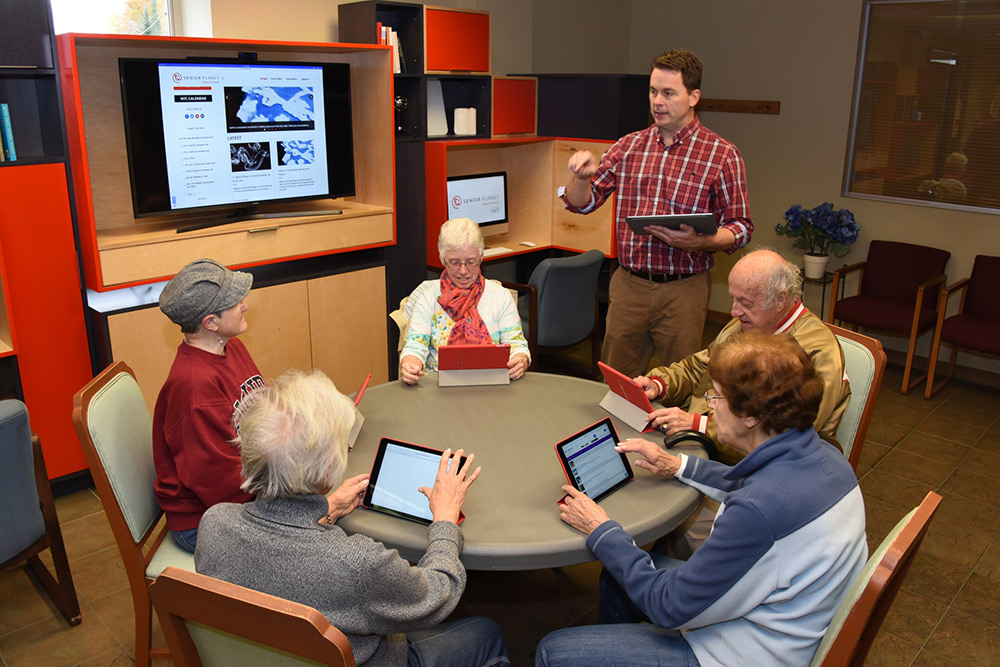If you’ve ever worried about falling—or how to protect an older friend or relative from a fall—you’ll want to take this quiz.
Balance Quiz
Congratulations - you have completed Balance Quiz.
You scored %%SCORE%% out of %%TOTAL%%.
Your performance has been rated as %%RATING%%
Your answers are highlighted below.
Question 1 |
Every year, 10 percent of Americans 65 and older experience a fall.
True | |
False |
Question 1 Explanation:
The problem is worse than that: every year one-third of Americans 65 and up hit the ground, according to the Centers for Disease Control and Prevention (CDC). What’s more, even falls that do no lasting damage are cause for concern because two-thirds of those who have tumbled once will tumble again within half a year. In older adults, falling causes more accidental injuries and deaths than car accidents do. Head injuries are to blame in 45 percent of fatal falls. Hip fractures are also serious—25 percent lead to death within six months, and another 25 percent result in so much damage that the individual requires lifelong nursing care.
Question 2 |
Falling is inevitable in later life because we lose our sense of balance as we grow older.
True | |
False |
Question 2 Explanation:
Losing your sense of balance isn’t a symptom of aging. It is a symptom of many other problems: diseases such as Parkinson’s and multiple sclerosis, stroke, poor eyesight or hearing, low blood pressure, osteoporosis, worsening muscle tone or even pain in the feet or legs. And medications can cause vertigo and dizziness. But there is good news—the majority of falls are preventable. First of all, talk to your doctor if you sense that your balance is off. Have your hearing and vision checked. Beware curbs, roots, uneven surfaces, slippery, bare floors, and doorsills. Wear shoes with nonskid soles inside and out. Install adequate lighting in your home and outside it. Secure electrical cords and shelve piles of magazines or books. Get rid of those lovely but deadly throw rugs. You can even reduce the risk of tripping over a pet at night with a glow-in-the-dark collar. If you are able, add some strength and balance exercises to your daily routine. And never text while walking!
Question 3 |
A fear of falling makes you more cautious and, therefore, less likely to tumble.
True | |
False |
Question 3 Explanation:
Researchers report that people who develop a fear of falling actually increase their risk of tumbling because they limit their activity. This can eventually reduce their mobility and overall physical fitness, which makes a fall more likely and recovery more difficult. Even people who have never fallen can become anxious about losing their balance. Fear of falling can cause older people—particularly those with eyesight problems—to isolate themselves. Yes, the risk of falling is very real and very scary. But letting fear restrict daily activity can be just as harmful in the long run.
Question 4 |
A person older than 75 is much more likely to spend significant time in a nursing home after falling than a person who falls between ages 65 and 74.
True | |
False |
Question 4 Explanation:
You are four or five times more likely to need a skilled nursing facility if you fall after your 75th birthday than in the previous decade. To make matters worse, if you do end up hospitalized after a fall and you’re 75 or over, you have a less than 50 percent chance of ever returning to your home to live independently.
Question 5 |
When older people develop a problem with dizziness, the explanation often lies in their medicine cabinets.
True | |
False |
Question 5 Explanation:
Dizziness and vertigo are common side effects of drugs that lower blood pressure, but even some antibiotics and medications for conditions such as incontinence or insomnia can cause your head to swim. The risk of falling goes up if you take multiple drugs and when you change medications. And some antidepressants can cause dizziness for weeks if you stop taking them abruptly, so talk to your doctor before starting or stopping any medicines. Always bring a list of your current medications to a doctor’s visit and be sure to report any sense of imbalance immediately.
Question 6 |
If you’re over 65, the most dangerous part of the house is the basement.
True | |
False |
Question 6 Explanation:
But getting down to the basement can be deadly. So can bathing. Stairs and bathrooms are the most dangerous parts of your home if you’re older than 65. Bathing, getting out of the tub or shower or using the toilet are risky, particularly for women, possibly because they have weaker upper body strength than men. Consider installing grab bars in the shower and around the toilet. Use nonslip bath mats and brighter light bulbs. If your budget allows, walk-in showers, higher toilets and nonskid tile are safest. As for stairs, make sure they are well lit and have railings on both sides when possible. Carpet on the stairs can help but well-worn carpet can become as slippery as bare flooring. You can also mark the edge of each step with bright tape. Make sure you keep both bathrooms and steps uncluttered.
Question 7 |
Tripping is the most common cause of a fall for older people.
True | |
False |
Question 7 Explanation:
Forty-one percent of the time elders fall not from tripping, but while shifting their weight—standing up, sitting down or leaning over too far. Walkers and canes can provide stability when moving from sitting to standing and back again, but some people resist using them because they don’t want to look infirm. To reduce imbalance still further, push the backs of your legs against the chair or sofa when standing while holding on to the furniture, walker or cane until your balance is certain.
Question 8 |
Older people whose balance is poor, or who have a high risk of falling for other reasons, should try taking vitamin D supplements.
True | |
False |
Question 8 Explanation:
Vitamin D deficiency is common in older adults and has been associated with balance and gait problems and falls. Taking a daily supplement, recommended by a doctor, may reduce these risks for older people who live at home. But studies in nursing homes and assisted-living facilities found that for unknown reasons, giving residents vitamin D supplements did not seem to help—nor did other interventions that have been successful for elders living at home.
Question 9 |
There’s nothing younger or midlife adults can do to prevent balance problems in later decades.
True | |
False |
Question 9 Explanation:
Research shows that exercising and staying active in your 30s and 40s can slow down or prevent balance problems in later years. Your sense of balance is coordinated in your cerebellum, the part of the brain that brings together information from your vision, inner ear, body position and spinal cord to help you stay upright. When these body systems begin to wear down in your 40s, you become more at risk for falling. And if you have led a sedentary lifestyle, your senses may be less keen than they were in younger years, further compromising your balance. Regular activity and exercise can help keep your body in good working order. Even better, to improve your balance, add some activity that directly challenges it. Walk on uneven surfaces, stand on pillows, rise up and down from your chair at work, don’t grip the handrail too tightly on the subway—all of this allows your brain and body to work together to center you and keep you on your feet.
Question 10 |
People who study tai chi, an ancient Chinese martial art, can improve their balance in just four weeks.
True | |
False |
Question 10 Explanation:
If you’ve seen people practicing tai chi, you might wonder how the calm exercise routine could have major physical and emotional benefits. Studies show it cuts the risk of a fall by 45 percent and may be particularly helpful for those suffering from Parkinson’s disease. Tai chi builds cardiovascular and bone strength, reflexes, flexibility and range of motion. And it helps people feel more confident about their balance, reducing the fear of falling. If tai chi doesn’t sound right for you, try some balance exercises at home. Grip a stable surface—chair back or counter—and stand on one leg for a minute, then the other. Next, rock from heel to toe, holding each for a count of 10. Last, circle your hips left five times, then right five times, keeping your shoulders and feet still. Increase duration as you feel stronger and steadier, and eventually try these exercises with eyes closed.
Once you are finished, click the button below. Any items you have not completed will be marked incorrect.
There are 10 questions to complete.


